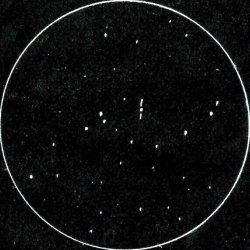Copyright 2009 Starry Mirror



The
TM
Astronomy From West Virginia
NOVA SAGITTARII 2009 NUMBER 3 - AUGUST 09-10, 2009
BRIDGEPORT, WV - Tonight, we had our first look at Nova Sagittarii Number 3, which erupted within the past five days. The nova is located just a little to the right of the "teapot" asterism in Sagitarius, and is an easy target in small telescopes. However, our observation tonight revealed that the star is fading very rapidly. In the past three days, the nova has faded from about magnitude 7.7 to magnitude 9.2 . At this rate, it won't be visible for long!
The nova was discovered on digital images taken August 6 by three astronomers in Japan and a few in Poland. In the never-ending quest by astronomers to remove themselves from actually having to look at the sky, we note that most of the handful of observations made since then have been made with the "Global-Rent-A-Scope" computerized telescopes in New Mexico. In fact, the number of people who will see the nova visually will be able to be counted on one hand.
The nova looks like a regular nova, in which two stars orbit each other. One star pulls material off the other, and collects it on its surface. Eventually, this collected material explodes, leading to a brightness increase of thousands of times. Unlike in a supernova, however, a regular nova does not cause the destruction of the star involved.
The object has been easily visible in binoculars, but within a few days a moderate-sized telescope will be required. The wonderful star cluster M-7 is just to the west, and is a good starting point. In wide-field binoculars, the cluster and the nova can be seen in one field! - GW

A depiction of the field of Nova Sagittarii Number 3, as seen through 15x70 binoculars.